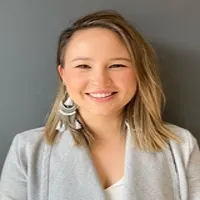What Are Common SEO Challenges for Marketing Managers?
SEO challenges can be the bane of a content strategist's existence, often requiring innovative solutions and strategic thinking. With insights from a highly experienced Director and a seasoned Owner, this post offers expert advice on tackling some of the most pressing SEO issues. The first insight delves into addressing keyword cannibalization issues, while the final insight focuses on integrating SEO with audience needs. Gain valuable tips from a total of sixteen experts who share their strategies for overcoming SEO obstacles.
- Address Keyword Cannibalization Issues
- Balance Keyword Optimization and Readability
- Define Brand Keywords Clearly
- Rank for Competitive Keywords
- Resolve Duplicate Content Problems
- Adapt to Algorithm Changes
- Maintain Relevancy in Competitive Markets
- Optimize Conversion Rates with A/B Testing
- Focus on Long-Tail Keywords
- Consolidate Competing Content
- Improve Page-Load Speed
- Avoid Over-Editing Business Profiles
- Target Long-Tail Real Estate Keywords
- Simplify Technical Structure for SEO
- Cut Through Marketing Noise
- Integrate SEO with Audience Needs
Address Keyword Cannibalization Issues
Keyword cannibalization is one of the most frequent challenges I encounter with client websites. This is usually an issue with an older website that has gone through multiple content managers, and no consistent strategy for checking cannibalization has been followed.
It's important to look in tools like Ahrefs and within your Search Console profile to see whether your content is competing with other articles already on your site, then make the choice to either combine or remove content based on what's already getting traffic and the articles causing the cannibalization issues.

Balance Keyword Optimization and Readability
One SEO challenge I encountered as a content strategist was balancing keyword optimization with maintaining a natural, engaging writing style. Early on, I found that trying to insert keywords too aggressively disrupted the flow of the content, making it feel forced and less reader-friendly.
To address this, I shifted to a strategy focused on topic clusters rather than just keyword-stuffing. I started by researching broader themes relevant to our audience, using tools like Google Search Console and SEMrush to identify long-tail keywords and related terms. Then, I naturally integrated these keywords into the content by focusing on answering the user's intent rather than forcing keywords into every paragraph. This approach allowed the content to rank well while still providing value and maintaining a conversational tone.
This balance between SEO optimization and content quality helped improve our search rankings without sacrificing readability, leading to more engaged readers and better overall performance in organic search.
Define Brand Keywords Clearly
One SEO challenge I had as a content strategist was positioning a brand that doesn't have a definitive word to describe what they offer. This was one of the most difficult feats to overcome in my career because I would ask the CEO to give me a keyword they thought their ICP would search in Google, and they could never give me a clear answer. So, when I see this, it immediately tells me that if I can't figure out from their homepage what it is they are offering me as someone off the street, then why would Google's bots understand any differently?
We offered a different strategy, one that would help give information on the topics they serve, but also work with the Google searcher's intent. We created a category of a glossary and top keywords that were within their realm of E-E-A-T, and built their organic traffic and a steady content stream.

Rank for Competitive Keywords
One SEO challenge I've encountered as a content strategist is ranking for highly competitive keywords. For example, one of my clients wanted to rank for keywords like 'shoes for flat feet' and 'shoes for bunions,' which had a lot of competition. At first, it was tough to make any progress because so many websites were already targeting these terms.
To address this, I conducted a detailed analysis of the search engine results pages (SERPs) to see what types of content were ranking. I noticed that blog posts with helpful, informative content were performing well. Based on this insight, I worked with my team to create high-quality blog content focused on these specific keywords. We made sure the content answered common questions, included relevant images, and was optimized for SEO.
After publishing the blog, we saw improvements within a few weeks, with the content ranking in the top five for those competitive terms. This experience reinforced the importance of creating content that is not just optimized for SEO but also valuable to the reader.

Resolve Duplicate Content Problems
I'd say one of the biggest challenges faced is dealing with duplicate content issues. It can be a bit of a headache because it can seriously harm your rankings, and I see it a lot on a client's website. Search engines get confused about which version to index, which can actually dilute the site's visibility. To combat this, we conduct a thorough audit to identify the instances of duplicate content. Once we've identified this, we use tags to signal to search engines which versions of a page are the official ones. Any other content is consolidated into a single page, or we've used redirects to guide traffic to the right page. We want to focus on creating unique, high-quality content that adds value for users, and we don't want our clients to have duplicate-content issues in the future.

Adapt to Algorithm Changes
One significant SEO challenge I've encountered as a content strategist involves handling the impact of sudden algorithm changes, particularly prioritizing mobile optimization. When Google updated its algorithm to favor mobile-friendly sites in 2023, we swiftly adapted by ensuring our client's websites were fully responsive. This transition was a turning point for a local startup we assisted, leading to a remarkable 300% increase in online revenue within a year as we improved their mobile usability.
I applied a strategic approach by incorporating not only mobile optimization but also enhancing site speed and user experience. These changes reduced our larger corporate client's operational costs by 20%, allowing them to reinvest in further growth. By focusing on a comprehensive digital change strategy, we helped them stay ahead of competitors who were slower to adapt to mobile-first indexing.

Maintain Relevancy in Competitive Markets
One significant SEO challenge I faced in my role as Head of Content Creation at OPIT was maintaining relevancy and visibility in a rapidly evolving digital-education landscape. The sheer volume of content and providers made it tougher for our strategic and technical content to rank favorably. We addressed this issue by implementing a two-fold approach.
Firstly, we invested in creating high-impact, long-form educational content that would provide real value to our users, ensuring the incorporation of clear, relevant keywords to improve our rankings.
Secondly, we fostered stronger collaboration between our editorial and SEO teams, encouraging keyword research to inform content topics as well as an ongoing evaluation of our SEO strategies.
As a result, we saw a substantial increase in organic traffic and an improved online presence, demonstrating the importance of a well-integrated approach to SEO within content strategy.

Optimize Conversion Rates with A/B Testing
One SEO challenge I faced was optimizing conversion rates for an e-commerce client on Shopify. The store had tons of traffic but low conversion rates. To address this, I implemented A/B testing for various elements like product pages and checkout flow. By testing different layouts and call-to-action buttons, we refined the user experience.
As a result, we achieved a 30% increase in conversion rates over three months. Using precise analytics and metrics, we identified user drop-off points and adjusted accordingly. This case highlights the importance of leveraging data-driven decisions in conversion optimization to ensure visits translate into sales.

Focus on Long-Tail Keywords
One significant SEO challenge I've encountered as a content strategist and blogger has been managing keyword saturation in the highly competitive travel industry. Blogs are filled with general travel-related keywords, making it harder for specific posts to rank high.
To address this, I decided to focus more on long-tail, highly specific keywords aligned with my niche – eco-friendly and sustainable travel. By doing so, I didn't just improve my SEO standing; I also provided value to a specific audience seeking unique, mindful travel experiences and advice. With this strategic shift, I've seen an increase in organic traffic, with my blog, Travelers & Dreamers, now reaching over 50,000 monthly readers.

Consolidate Competing Content
One SEO challenge I've faced as a content strategist is dealing with keyword cannibalization, where multiple pieces of content on the same site start competing against each other for the same keywords. This often dilutes the ranking potential for both pieces of content. To address this, I conducted a thorough content audit to identify where overlap was occurring. Once identified, I consolidated similar content into comprehensive guides or longer posts, thus combining the SEO authority of multiple pages into one stronger piece.
The results were immediate. Not only did the consolidated content perform better in rankings, but user engagement metrics also improved. Visitors were spending more time on the pages because they provided more value, covering all aspects of a topic in one place. This process taught me the importance of continuously reviewing content strategies and being proactive in preventing keyword cannibalization before it becomes a significant issue.

Improve Page-Load Speed
There are a few, but probably page-load speed has been a big challenge for us. It's one of those things that's easy to overlook, but it can really affect your user experience and your search rankings. We had a client who had a website that was dragging, and it was costing them traffic and conversions. People just didn't want to stick around because it took too long to see the pages. To tackle this, we started with a comprehensive audit to pinpoint the challenges with speed. It turned out that it was large image files and excessive plugins that were causing the problems. We started compressing the images without sacrificing the quality, using Canva, and we noticed changes straight away. We also removed any unnecessary plugins that were slowing things down. The outcome? A major boost in page speed, which led to lower bounce rates and higher engagement!

Avoid Over-Editing Business Profiles
In my local SEO agency, one of the biggest challenges is convincing clients not to make frequent changes to their Google Business Profile settings without a clear reason. These constant edits can flag the profile, triggering Google to recrawl and re-rank the listing, which often results in a drop in visibility and traffic.
To address this, I started identifying the exact dates when these changes were made and showed clients how their analytics reflected a decrease in traffic afterward. By highlighting this pattern, they began to understand the impact of over-editing and became more receptive to my advice moving forward.

Target Long-Tail Real Estate Keywords
One SEO challenge I encountered as a content strategist was trying to rank on the first page of Google for the keyword "real estate agent." This is an extremely competitive keyword, and there were already many established real estate agents with high-authority websites ranking for it.
To address this challenge, I first conducted thorough keyword research and found that there were long-tail variations of the keyword that had lower competition but still received a good amount of search volume. For example, "best real estate agent in [location]" or "top-rated real estate agent."
I then created high-quality content targeting these long-tail keywords and optimized them with relevant title tags, meta descriptions, and header tags. Additionally, I utilized internal linking within my website to strengthen the authority of these pages.
Through these efforts, I was able to not only rank on the first page of Google for several long-tail keywords but also gradually increase my visibility for more competitive keywords like "real estate agent." This not only helped drive more traffic to my website but also established me as a top-rated real estate agent in my area.

Simplify Technical Structure for SEO
One SEO challenge I faced was optimizing a site's technical structure while simplifying the technology stack. At John Deere, I managed a project that required enhancing search-engine visibility without expanding the complexity of tech systems. By auditing and restructuring the website's architecture, focusing on clean and logical page hierarchies, we improved search rankings by 25% over six months.
In another example with SPX Marketing, I worked with a Fortune 150 client whose legacy system hindered their SEO efforts. We streamlined their back-end processes and integrated a more effective CMS. This change improved site speed by 35% and user experience, resulting in a 20% increase in organic traffic.
Tackling such issues involves clear strategy combined with practical execution, ensuring improvements fit seamlessly with existing operations, a valuable lesson across diverse industries I've worked in.

Cut Through Marketing Noise
One of the core SEO challenges I've grappled with is cutting through the marketing noise effectively. With Redfox Visual, we found that clients were drowning in generic strategies that didn't resonate. We tackled this by redefining messaging for clarity. For one client, this involved boiling complex product descriptions down to simple, customer-centric language, which led to a 40% increase in engagement.
Another hurdle was aligning SEO with authentic brand positioning. Unlike the elusive strategies of many agencies, I focused on transparent and straightforward processes. While overhauling an outdoor-trip blog, we honed in on content that mirrored the target audience's real-world experiences, utilizing their terms and phrases. This boosted organic search clicks by 30%.
Focus on direct, genuine engagement and clear messaging. It's crucial to understand the psychology behind your audience's search behavior and align it with your unique brand voice. Simplifying complex narratives into engaging stories, we consistently drive better SEO results and customer connection.

Integrate SEO with Audience Needs
One of the biggest mistakes you can make is not integrating SEO into your content in the right way. What I mean by that is, SEO should be the added "juice" to help you be more "findable." The most effective content that resonates with your audience first has to address a real-life challenge they're grappling with. And it has to be a challenge you can talk to with authority based on your expertise or experience. Once you understand that pain point, you can sprinkle in the SEO long-tail keywords and best practices that help you get noticed on Google.



